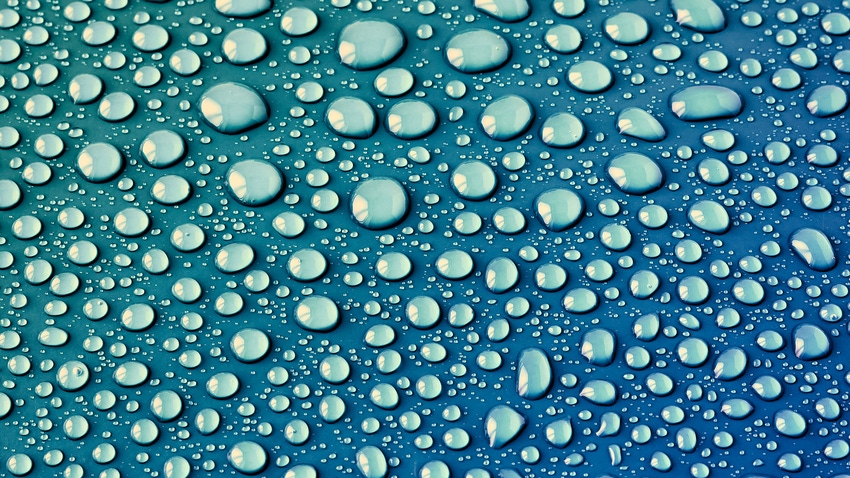Most Water-Repellent Surface to Date Emerges
Researchers explore the slipperiness of liquid droplets at the nano level and report surprising results that could inform future material design.
November 13, 2023

At a Glance
- A liquid-like layer of self-assembled monolayers (SAMs) were used
- Scientists then made a startling discovery
- Potential applications include automotive, microfluidics, maritime, and more
Scientists have developed a surface that they said repels water more than any other invented so far, paving the way for new molecular studies of how water droplets interact with their environments as well as novel applications.
A team at Finland's Aalto University explored the friction between solid surfaces and liquid at the nanometer level, developing a new mechanism that makes water droplets slip off surfaces that potentially could be used in a range of fields and industries, including plumbing, optics, automotive, and maritime.
Specifically, the team—led by Aalto University Professor Robin Ras—used a specially designed reactor to create a liquid-like layer of molecules, called self-assembled monolayers (SAMs), on top of a silicon surface to investigate the interaction between liquid and surfaces.
Their results demonstrated the particular conditions in which the droplets showed more slipperiness, depending on the coverage of the monolayers, providing key information for developing water-repellent surfaces.
"Our work is the first time that anyone has gone directly to the nanometer-level to create molecularly heterogenous surfaces,"� said Aalto doctoral researcher Sakari Lepikko, one of the scientists who worked on the project, in a post on the university's news site.
Surprising Water-Repellent Results
Without even thinking about it, people use surfaces and objects that repel water to different degrees all the time in their every-day lives, including cookware, clothing, eyeglasses, and personal technology devices. Scientists continually strive to make water-repellent surfaces better to improve the performance of these applications, which have become essential to modern life.
A key way to do this is to understand the molecular dynamics of microscopic droplets interacting with surfaces, which is what the Aalto team did—except at an even smaller, nano level.
Once the team developed the reactor composed of a layer of SAMs atop a silicon surface, they adjusted conditions such as temperature and water content inside it. This allowed them to experiment with and fine-tune how much of the silicon surface the monolayer covered.
What they discovered in their experiments is that the surface showed more slipperiness—thus ability to repel water—when SAM coverage was low or high, which are also the scenarios in which the surface is most homogeneous, Lepikko explained, adding that some of the results were surprising.
"At low coverage, the silicon surface is the most prevalent component, and at high, SAMs are the most prevalent," he said. "It was counterintuitive that even low coverage yielded exceptional slipperiness."
Specifically, the water becomes a film over the surface at low coverage, which the researchers believed would increase the amount of friction. Instead, they found that water flows freely between the molecules of the SAM at low SAM coverage, sliding off the surface.
On the other hand, when the SAM coverage is high, the water stays on top of the SAM and slides off just as easily, the researchers observed. "It’s only in between these two states that water adheres to the SAMs and sticks to the surface," Lepikko said.
Future Applications
The researchers published a paper on their work in the journal Nature Chemistry, noting that their experiments created the slipperiest liquid surface so far created by scientists. Researchers from the University of Jyväskylä also contributed to the study.
The development has numerous applications for modern materials science, both for consumer and industrial products, Lepikko said.
"Things like heat transfer in pipes, de-icing, and anti-fogging are potential uses," he said. "It will also help with microfluidics, where tiny droplets need to be moved around smoothly, and with creating self-cleaning surfaces."
The team plans to continue their work by improving the reactor they developed for experimentation, the researchers said. Specifically, the SAM coating used in the research is extremely thin, dispersing easily after physical contact, Lepikko said. Improving the experimental container can provide even more relevant information that can be applied to future innovations.
About the Author(s)
You May Also Like



